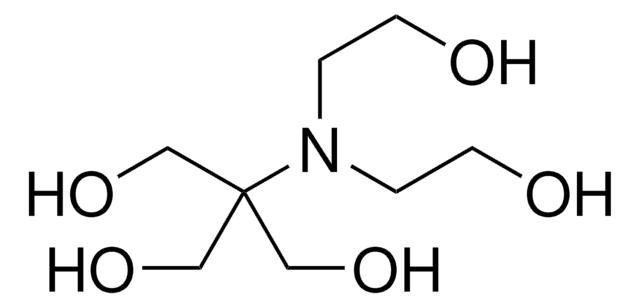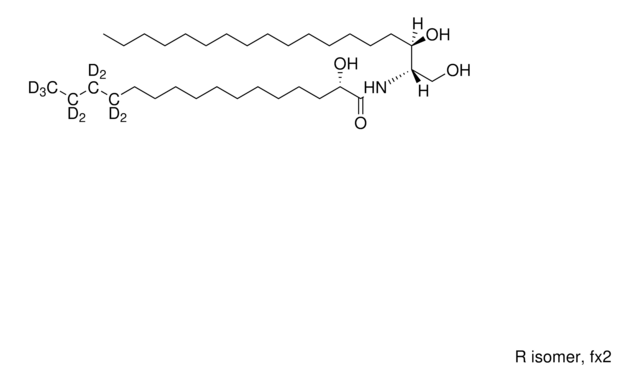810811P
Avanti
18:1 DGPP
dioleoylglycerol pyrophosphate (ammonium salt), powder
Synonym(s):
110744
About This Item
Recommended Products
Assay
>99% (TLC)
form
powder
packaging
pkg of 1 × 5 mg (810811P-5mg)
manufacturer/tradename
Avanti Research™ - A Croda Brand 810811P
lipid type
bioactive lipids
shipped in
dry ice
storage temp.
−20°C
SMILES string
[O-]P(OC[C@]([H])(OC(CCCCCCC/C=C\CCCCCCCC)=O)COC(CCCCCCC/C=C\CCCCCCCC)=O)(OP([O-])(O)=O)=O.[NH4+].[NH4+]
InChI
1S/C39H74O11P2.2H3N/c1-3-5-7-9-11-13-15-17-19-21-23-25-27-29-31-33-38(40)47-35-37(36-48-52(45,46)50-51(42,43)44)49-39(41)34-32-30-28-26-24-22-20-18-16-14-12-10-8-6-4-2;;/h17-20,37H,3-16,21-36H2,1-2H3,(H,45,46)(H2,42,43,44);2*1H3/b19-17-,20-18-;;/t37-;;/m1../s1
InChI key
SIWIEYLZDXPRIY-AXQFFRRZSA-N
General description
Application
Biochem/physiol Actions
Packaging
Legal Information
Storage Class Code
11 - Combustible Solids
WGK
WGK 3
Flash Point(F)
No data available
Flash Point(C)
No data available
Regulatory Listings
Regulatory Listings are mainly provided for chemical products. Only limited information can be provided here for non-chemical products. No entry means none of the components are listed. It is the user’s obligation to ensure the safe and legal use of the product.
JAN Code
810811P-BULK:
810811P-VAR:
810811P-5MG:
Certificates of Analysis (COA)
Search for Certificates of Analysis (COA) by entering the products Lot/Batch Number. Lot and Batch Numbers can be found on a product’s label following the words ‘Lot’ or ‘Batch’.
Already Own This Product?
Find documentation for the products that you have recently purchased in the Document Library.
Our team of scientists has experience in all areas of research including Life Science, Material Science, Chemical Synthesis, Chromatography, Analytical and many others.
Contact Technical Service








